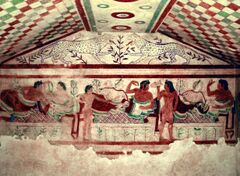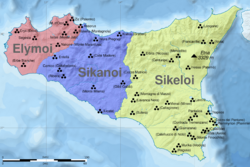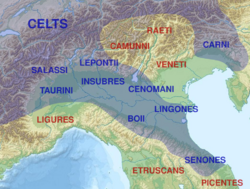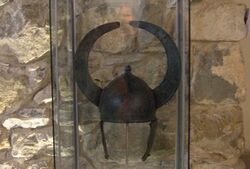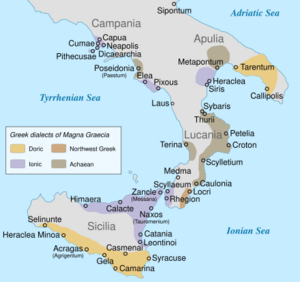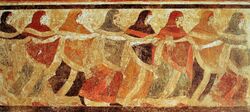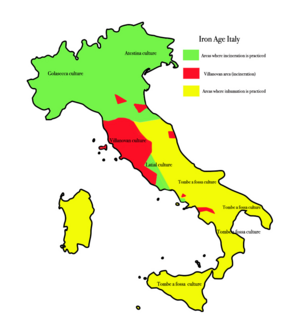This list of ancient peoples living in Italy summarises groupings existing before and during the Roman expansion and conquest of Italy. Many of the names are either scholarly inventions or exonyms assigned by the ancient writers of works in ancient Greek and Latin. In regard to the specific names of particular ancient Italian tribes and peoples, the time-window in which historians know the historical ascribed names of ancient Italian peoples mostly falls into the range of about 750 BC (at the legendary foundation of Rome) to about 200 BC (in the middle Roman Republic), the time range in which most of the written documentation first exists of such names and prior to the nearly complete assimilation of Italian peoples into Roman culture. Nearly all of these peoples and tribes spoke Indo-European languages: Italics, Celts, Ancient Greeks, and tribes likely occupying various intermediate positions between these language groups. On the other hand, some Italian peoples (such as the Rhaetians, Camuni, Etruscans) likely spoke non-Indo-European languages. In addition, peoples speaking languages of the Afro-Asiatic family, specifically the Semitic Phoenicians and Carthaginians, are known to have settled and colonized some coastal parts of Italy (particularly in insular Italy in western and southern Sardinia and western Sicily).[1]
Before the widespread introduction of writing, and before ancient sources existed that describe ancient Italian tribes, archaeological cultures might be hypothesized to have been associated with historical identities, especially in relatively isolated and continuous regions. However, due to the lack of written documentation, any further assumptions as to the historical names or cultural identities of these proposed ancient archeological cultures and of those Italian peoples existing prior to known ancient written sources would be presumptuous by current archeological and historical standards.
The specifically named ancient peoples of Italy listed here are therefore confined mostly to the Iron Age of Italy, when the first known written evidence, generally from Ancient Roman or Greek sources, ascribed names to these tribes or peoples before such peoples became assimilated into Roman culture through the Roman conquest. In contrast to those tribes or peoples documented by ancient sources, pre-Roman and pre-Iron Age archeological cultures are also listed, following the lists of specifically named ancient Italian peoples and tribes; however, the names of these pre-Roman archeological cultures are modern inventions, and most of the actual names of the peoples or tribes that belonged to these proposed cultures, if such names existed, currently remain unknown.
Speakers of non-Indo-European languages
Scholars believe - though sometimes on the basis of scanty evidence - that the following peoples spoke non-Indo-European languages. Some of them were Pre-Indo-Europeans or Paleo-Europeans while, with regard to some others, Giacomo Devoto proposed the definition of Peri-Indo-European (i.e. everything that has hybrid characters between Indo-European and non-Indo-European).[2]
Sardinians
The Sardinians were possibly Sherden.[3][4][5][6]
- Balares (Balari)[7]
- Ilienses/Iolaes/Diagesbes (Iliensi/Iolei)[7]
- Corsi (Possibly related to Ligures and therefore possibly Indo-European speakers)
Tyrrhenians
The Tyrrhenians were the Etruscans and their linguistic relatives.
- Etruscans - Centered in Etruria with later influences stretching from the Po Valley to Campania.
- Raeti
- Camunni[8]
Others (classification uncertain)
- North Picenes - Centered on the Adriatic Coast with settlements around the region of Ancona.
- Rutuli
- Sicani
- Ligures
Speakers of Indo-European languages
Italo-Celtic
Italic and Celtic languages are commonly grouped together on the basis of features shared by these two branches and no others. This could imply that they are descended from a common ancestor and/or Proto-Celtic and Proto-Italic developed in close proximity over a long period of time.
Italic
- Venetics[9][10]
- Latino-Faliscans[10]
- Latins/Romans - Centered around the central plain of Italy between the Tiber and the Alban Hills.
- Falisci
Speakers of Italic languages are thought to have included,
- Sicels
- Adriatic Veneti - centered in the Po delta.
- Carni
- Catali
- Catari
- Histri
- Liburnians
- Lopsi
- Secusses
- Venetulani
- Umbri[11] - Centered in central Italy stretching from the Adriatic coast to the upper Tiber.
- Sabines - Centered north of Rome and by the river Tiber.
- Marsi - Centered around Lake Fucinus
- Volsci - Centered on the Pontine plain
- South Picenes
- Marrucini
- Oscans - Centered in central Italy by Cumae and Capua.
- Opici
- Aurunci/Ausones
- Campanians - Centered in the region of Naples
- Mamertines
- Paeligni
- Samnites - Centered in central Italy, south-east of Rome north of Capua.
- Pentri
- Caraceni
- Caudini
- Frentani - Centered on the southern Adriatic coast.
- Hirpini
- Lucani - Centered on the south-western coast of Italy.
- Bruttii
- Itali
- Oenotri
- Chones
- Morgetes
- Opici
- Others
- Aequi
- Fidenates
- Hernici
- Vestini
- Aborigines
- Euganei
Celts
The Celts of the Italian peninsula included,
- Cisalpine Gauls - Centered in the Po Valley with influences stretching to Etruscan Felsina
- Boii
- Carni
- Cenomani
- Lingones
- Senones
- Vertamocorii
- Gaesatae?
- Insubres
- Arverni
- Aedui
- Ambarri
- Aulerci
- Bituriges
- Carnutes
- Lepontics
- Graioceli
- Lepontii
- Salassi
- Medulli
- Ceutrones
- Allobroges
- Veragri
- Helvetii
- Seduni
Ligures
The Ligures, who may have spoken Indo-european language of Celtic type or a non-Indo-european language, were:
- Ligures
- Apuani
- Bagienni
- Briniates
- Friniates
- Garuli
- Hercates
- Ilvates
- Orobii
- Laevi
- Lapicini
- Marici
- Segusini
- Statielli
- Taurini
Greeks
Sometimes referred in ancient sources as Pelasgi, the Ancient Greeks of the Italian peninsula included,
- Achaeans
- Dorians
- Ionians
- Italiotes
- Siceliotes
Others (classification uncertain)
- Iapygians or Apulians (possibly related to Illyrians) - Centered on the southern Adriatic coast with settlements around Tarentum.
- Messapians
- Peucetians
- Daunians
- Elymians (possibly related to Ligures)
Pre-Roman conquest archeological cultures
The specific identities or names of the tribes or groups of peoples that practiced these pre-Roman archeological cultures are mostly unknown. The posited existence of these archeological cultures is based on archeological assemblages of artifacts that share common traits and are found within a certain region and originate within a certain prehistoric period. Therefore, many of these archeological cultures may not necessarily correspond to a specific group of ancient people and, in fact, may have been shared among various groups of ancient peoples. The extent to which an archeological culture is representative of a particular cohesive ancient group of people is open for debate; many of these cultures may be the product of a single ancient Italian tribe or civilization (e.g. Latial culture), while others may have been spread among different groups of ancient Italian peoples and even outside of Italy. For example, Latial culture is believed to be the product specifically of the Ancient Latin tribe; the Canegrate culture and Golasecca culture have been associated with various ancient proto-Celtic, Celtic and Ligure tribes including the Lepontii, Orobii, and Insubres, while other archeological cultures may have been present among multiple groups throughout and beyond the Italian peninsula.
Neolithic
- Pre-Nuragic Sardinia
- Cardial Culture
- Grotta Verde culture
- Filiestru culture
- Bonu Ighinu culture
- San Ciriaco culture
- Arzachena culture
- Ozieri culture
- Gaudo culture
Copper Age
- Pre-Nuragic Sardinia
- Abealzu-Filigosa culture
- Monte Claro culture
- Sardinian Beaker culture
- Beaker culture
- Remedello culture
- Rinaldone culture
- Laterza culture
- Gaudo culture
- Conelle-Ortucchio culture
- Serraferlicchio culture
- Spilamberto group
Bronze Age
- Apennine culture
- Bonnanaro culture
- Nuragic civilization
- Torrean civilization
- Canegrate culture
- Proto-Villanovan culture
- Polada culture
- Castelluccio Culture
- Thapsos Culture
- Terramare culture
- Castellieri culture
- Luco-Meluno culture
- Scamozzina culture
Iron Age
- Hallstatt culture
- La Tène culture
- Villanova culture
- Latial culture
- Este culture
- Golasecca culture
- Camunni culture
- Fritzens-Sanzeno culture
Genetics
A genetic study published in Science in November 2019 examined the remains of six Latin males buried near Rome between 900 BC and 200 BC. They carried the paternal haplogroups R-M269, T-L208, R-311, R-PF7589 and R-P312 (two samples), and the maternal haplogroups H1aj1a, T2c1f, H2a, U4a1a, H11a and H10. A female from the preceding Proto-Villanovan culture carried the maternal haplogroups U5a2b.[12] These examined individuals were distinguished from preceding populations of Italy by the presence of ca. 25-35% steppe ancestry.[13] Overall, the genetic differentiation between the Latins, Etruscans and the preceding proto-villanovan population of Italy was found to be insignificant.[14]
See also
- Prehistoric Italy
- Genetic history of Italy
- List of ancient Italic peoples
- List of Nuragic tribes
- History of Italy
- History of the Mediterranean region
- Etruscan civilization
- Pre-Nuragic Sardinia
- Nuragic civilization
- Latins (Italic tribe)
- Prehistory of Corsica
- Prehistory of Malta
- History of Sardinia
- History of Sicily
- List of Celtic tribes
- List of ancient Germanic peoples
- List of ancient Greek tribes
- List of ancient Iranian peoples
- Italo-Celtic
- Magna Graecia
- Rock Drawings in Valcamonica
- Osco-Umbrian languages
- Roman Kingdom
- Founding of Rome
- Aeneid
- Old Latium
References
- ↑ "Sicilian Peoples: The Carthaginians - Best of Sicily Magazine - Carthaginians, Phoenicians, Hanibal, Hamilcar, Punic Wars, Punic Language, Carthage, Palermo, Zis, Sis, Panormos, Solus, Motya, Motia, Mozia.". http://www.bestofsicily.com/mag/art156.htm.
- ↑ Giacomo Devoto, Gli antichi Italici, Firenze, Vallecchi, 1931.
- ↑ "sardi in "Dizionario di Storia"". http://www.treccani.it//enciclopedia/sardi_(Dizionario-di-Storia).
- ↑ "SARDI in "Enciclopedia Italiana"". http://www.treccani.it//enciclopedia/sardi_res-c8fc02e8-8bb6-11dc-8e9d-0016357eee51_(Enciclopedia-Italiana).
- ↑ "ARCHIVIO. Nuovo studio dell'archeologo Ugas: "È certo, i nuragici erano gli Shardana"". February 3, 2017. https://www.sardiniapost.it/culture/nuovo-studio-dellarcheologo-ugas-e-certo-i-nuragici-erano-gli-shardana/.
- ↑ "SP INTERVISTA>GIOVANNI UGAS: SHARDANA". http://www.sardiniapoint.it/5085.html.
- ↑ 7.0 7.1 "LacusCurtius • Ptolemy's Geography — Book III, Chapter 3". https://penelope.uchicago.edu/Thayer/E/Gazetteer/Periods/Roman/_Texts/Ptolemy/3/3*.html#ImageMapLocation.
- ↑ Markey, Thomas (2008). Shared Symbolics, Genre Diffusion, Token Perception and Late Literacy in North-Western Europe. NOWELE.
- ↑ Storia, vita, costumi, religiosità dei Veneti antichi at www.venetoimage.com (in Italian). Accessed on 2009-08-18.
- ↑ 10.0 10.1 Villar, cit., pp. 447-482.
- ↑ "L'alfabeto umbro su Omniglot.com". 16 January 2009. http://www.omniglot.com/writing/olditalic.htm#umbrian.
- ↑ Antonio et al. 2019, Table 2 Sample Information, Rows 29-32, 36-37.
- ↑ Antonio et al. 2019, p. 2.
- ↑ Antonio et al. 2019, p. 3.
Bibliography
- Antonio, Margaret L. et al. (November 8, 2019). "Ancient Rome: A genetic crossroads of Europe and the Mediterranean". Science (American Association for the Advancement of Science) 366 (6466): 708-714. doi:10.1126/science.aay6826.
External links
- "Languages and Cultures of Ancient Italy. Historical Linguistics and Digital Models", Project fund by the Italian Ministry of University and Research (P.R.I.N. 2017)
 |

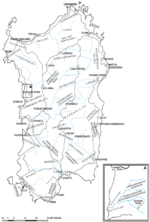
.jpg)

